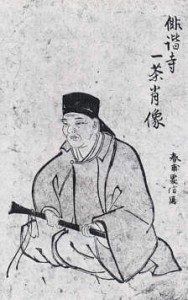#bikeschool The Giveaway
“We make a living by what we get. We make a life by what we give” – Winston Churchill
This week we are the midst of one of the most tightly fought contests since King Arthur took on the might of The Black Knight. The intellectual hammer has been thrown down and it’s time to see which of you have the ‘refined skills to pay, the ever increasingly large, bills to which you owe’ and be in with a chance to win a pair of Ryders Eyewear Seeker sunglasses. For those of you who missed last Thursday’s #bikeschool and are not currently thinking and dreaming in 5-7-5’s, that last sentence contained a ‘Haiku’, not a very good one, but it was Haiku!
And that’s what this week is all about… the Haiku, or more accurately the #baiku, but more of that later. Haiku is a short, 17-mora form of poetry, usually written in three lines with 5-7-5 moras in each respective line. Although haiku are often stated to have 17 syllables this isn’t completely accurate as syllables and moras are not the same but it is widely accepted in Western culture that haiku can take the form of a string of 5, 7 and 5 syllable sentences. Closely tied to the Japanese aesthetic of Yugen and the spirituality of Buddhism, Haiku looks deceptively simple, but can take years to master, unfortunately you now only have a couple of days to get your entries into us before this weeks #bikeschool class!
For those of you who have no interest in history, Japan or widening your intellectual boundaries, you may want to skip the next section…
Basho and the great masters
 Haiku derives from a type of Japanese court poetry called ‘tanka’ that was popularised and refined between the 9th and 12th centuries. Tanka was often written to explore religious or courtly themes and had a structure of five lines with a 5-7-5-7-7 syllable structure. During this period, it became a popular activity to write long strings of linked tanka verse. One person would often contribute the first three lines (5-7-5) of the poetic chain and a different author would complete the chain by composing a 7-7 section. Then another author would build on the previous 7-7, with another 5-7-5 passage. This chaining of verses called ‘renga’, could sometimes add up to hundreds of linked tanka.
Haiku derives from a type of Japanese court poetry called ‘tanka’ that was popularised and refined between the 9th and 12th centuries. Tanka was often written to explore religious or courtly themes and had a structure of five lines with a 5-7-5-7-7 syllable structure. During this period, it became a popular activity to write long strings of linked tanka verse. One person would often contribute the first three lines (5-7-5) of the poetic chain and a different author would complete the chain by composing a 7-7 section. Then another author would build on the previous 7-7, with another 5-7-5 passage. This chaining of verses called ‘renga’, could sometimes add up to hundreds of linked tanka.
The first part of the poem, called ‘hokku’ or “starting verse,” frequently set the tone for the rest of the poem, and the authors of hokku often earned the respect and admiration of their follow poets. By the 19th century, largely through the work of Masaoka Shiki, hokku began to be written and read as individual poems. From the word hokku derives our word haiku.
Three great masters of hokku, Basho, Buson and Issa, lived during Japan’s Edo-period (1600-1868) and their work still exerts a great deal of influence on how haiku is written today. All three men were born in rural villages and spent many years practicing and refining their art form as well as wandering the countryside, observing nature and the human condition.
So… you guys have a lot to live up to!!!
The EVOLution of the #baiku
Last week @bikerly and @cyclelicious had a discussion surrounding haikus and how easy it would be to get the word ’embrocation’ into one of their own creations. @cyclelicious suggested he try and work with the lyrics from CAKE’s ‘The Distance’ and quite impressively the follwoing was created…
It’s icy then hot
embrocation in time of need
cycling the distance
As with most of @bikerly’s ideas, this has quickly snowballed into a full on EVOL plan and at last week’s #bikeschool a contest was announced to sweeten those mind-grapes and produce some bike related haikus… more commonly known as a #baiku!
 The only rules of the #baiku contest are that your entries should be in haiku format and MUST include the words ‘#bikeschool‘ and ‘Ryders Sunglasses‘ in there somewhere. The awesome prize for this contest is a pair of Ryders Eyewear sunglasses and the competition is already hotting up. As this article goes to press there have been some fantastic entries from @kui360 and @twittyboyd amongst others but there is still time to enter and the winner will be chosen by @cyclelicious this week after it closes on Thursday at 1pm EST.
The only rules of the #baiku contest are that your entries should be in haiku format and MUST include the words ‘#bikeschool‘ and ‘Ryders Sunglasses‘ in there somewhere. The awesome prize for this contest is a pair of Ryders Eyewear sunglasses and the competition is already hotting up. As this article goes to press there have been some fantastic entries from @kui360 and @twittyboyd amongst others but there is still time to enter and the winner will be chosen by @cyclelicious this week after it closes on Thursday at 1pm EST.
Until next time, good luck and keep Loving The Bike……
Stevie





Kids in #cargobike
Ryders sunglasses in place
Lend #bikeschool success